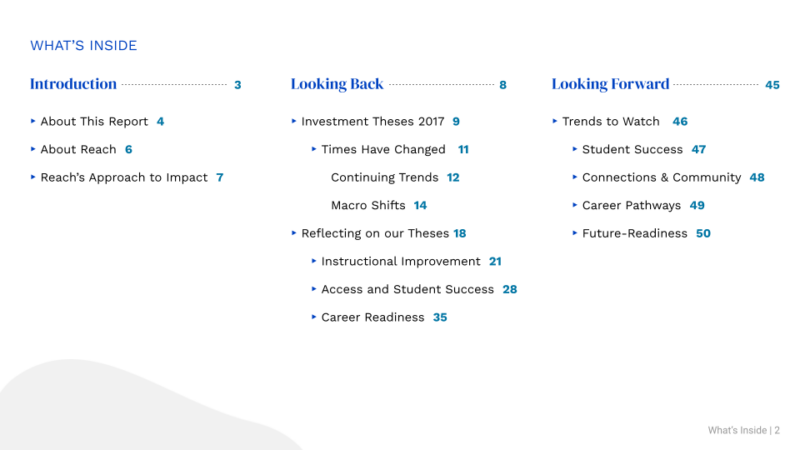Reach made its first higher ed investment in 2015. In those days, we were compelled by data showing that a college degree was the most reliable path toward economic mobility and that degree attainment was highly skewed toward those with high socioeconomic status. We believed that technology could make college degrees more accessible to people across the economic spectrum.
By 2017, we articulated our impact thesis: technology can be used to make 2- and 4-year degrees more accessible through improved
- instruction,
- student access and success, and
- career readiness.
Across four funds, we made 14 core investments aligned to these theses. We created this impact report to reflect on the change we had hoped to see and that we saw. Over the past seven years, our idealism and optimism have been tempered by the immense on-the-ground changes that higher education institutions face: the after-effects of a global pandemic, declining enrollment, a shifting labor market, and the unleashing of generative AI into the world.
That said, higher-ed institutions and edtech innovators still found ways to have impact and make progress. What lessons have we learned, and how can we prepare ourselves for the future? What opportunities for impact lay ahead?
While this impact report serves as a learning experience for our fund, we hope that sharing our reflections with others in the education, edtech, and impact investing ecosystem can spur discussion, help align efforts behind pressing challenges, and catalyze the next generation of impactful solutions.







